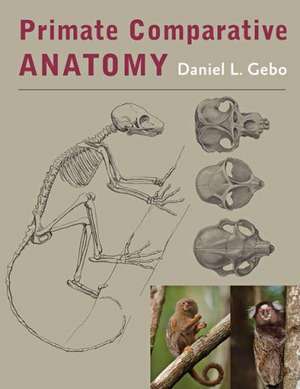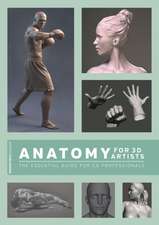Primate Comparative Anatomy
Autor Daniel L. Geboen Limba Engleză Hardback – 23 oct 2014
Winner of the CHOICE Outstanding Academic Title of the Choice ACRL
Why do orangutan arms closely resemble human arms? What is the advantage to primates of having long limbs? Why do primates have forward-facing eyes? Answers to questions such as these are usually revealed by comparative studies of primate anatomy.
In this heavily illustrated, up-to-date textbook, primate anatomist Daniel L. Gebo provides straightforward explanations of primate anatomy that move logically through the body plan and across species. Including only what is essential in relation to soft tissues, the book relies primarily on bony structures to explain the functions and diversity of anatomy among living primates. Ideal for college and graduate courses, Gebo's book will also appeal to researchers in the fields of mammalogy, primatology, anthropology, and paleontology.
Included in this book are discussions of:
- Phylogeny
- Adaptation
- Body size
- The wet- and dry-nosed primates
- Bone biology
- Musculoskeletal mechanics
- Strepsirhine and haplorhine heads
- Primate teeth and diets
- Necks, backs, and tails
- The pelvis and reproduction
- Locomotion
- Forelimbs and hindlimbs
- Hands and feet
- Grasping toes
Preț: 525.98 lei
Preț vechi: 649.35 lei
-19% Nou
100.66€ • 104.70$ • 83.10£
Carte tipărită la comandă
Livrare economică 15-29 aprilie
Specificații
ISBN-10: 1421414899
Pagini: 208
Ilustrații: 168, 15 black & white halftones, 153 black & white line drawings
Dimensiuni: 212 x 296 x 18 mm
Greutate: 0.81 kg
Editura: Johns Hopkins University Press
Descriere
Why do orangutan arms closely resemble human arms? What is the advantage to primates of having long limbs? Why do primates have forward-facing eyes? Answers to questions such as these are usually revealed by comparative studies of primate anatomy. In this heavily illustrated, up-to-date textbook, primate anatomist Daniel L. Gebo provides straightforward explanations of primate anatomy that move logically through the body plan and across species.
Including only what is essential in relation to soft tissues, the book relies primarily on bony structures to explain the functions and diversity of anatomy among living primates. Ideal for college and graduate courses, Gebo's book will also appeal to researchers in the fields of mammalogy, primatology, anthropology, and paleontology. Included in this book are discussions of:* Phylogeny* Adaptation* Body size* The wet- and dry-nosed primates* Bone biology* Musculoskeletal mechanics* Strepsirhine and haplorhine heads* Primate teeth and diets* Necks, backs, and tails* The pelvis and reproduction* Locomotion* Forelimbs and hindlimbs* Hands and feet* Grasping toes





